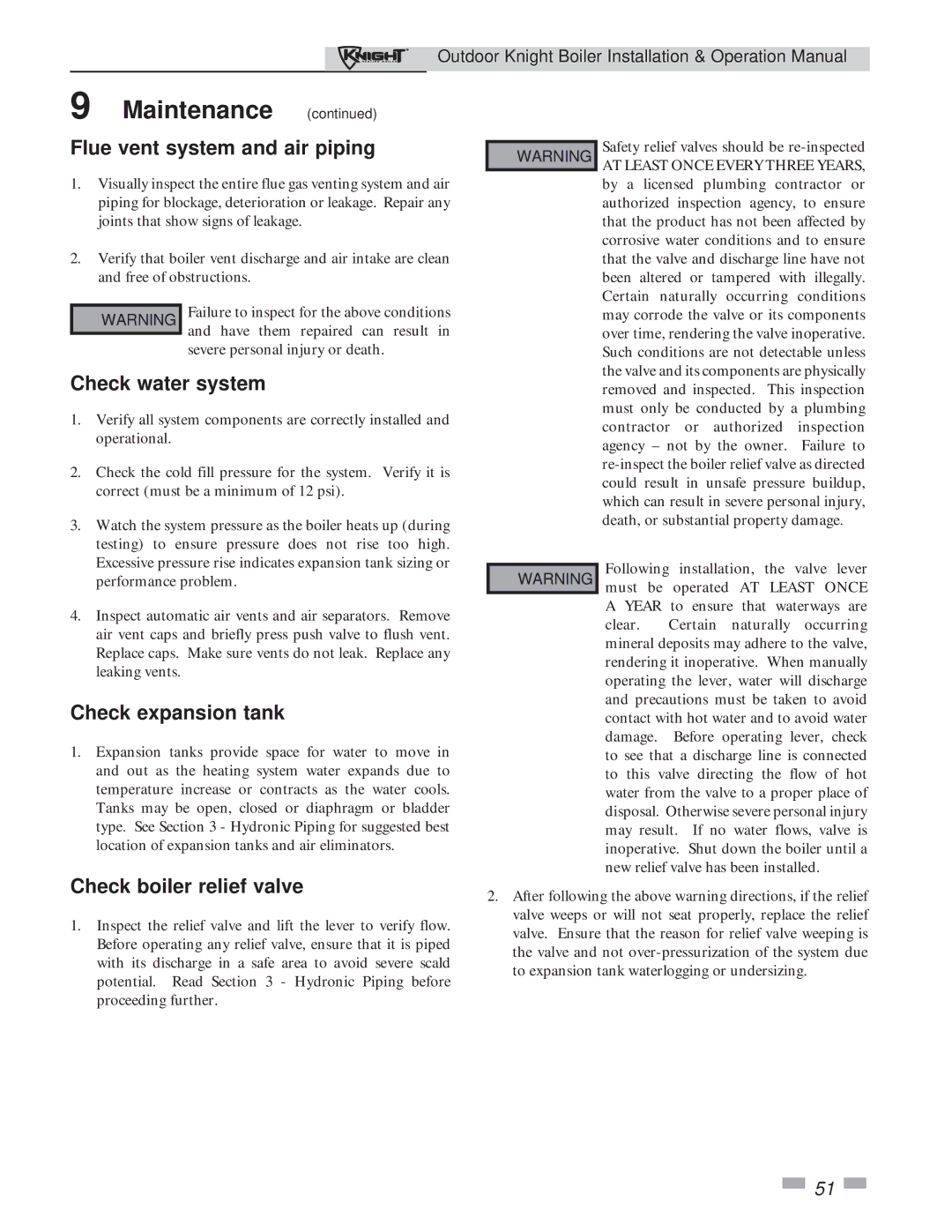151-286 specifications
Lochinvar 151-286 is a high-efficiency water heater designed for both residential and commercial applications. This model stands out due to its advanced technology, user-friendly controls, and robust construction, making it a reliable choice for those seeking to optimize their hot water supply.One of the key features of the Lochinvar 151-286 is its impressive heating capacity. With a maximum input of 286,000 BTU/hr, it can efficiently meet hot water demands for a variety of settings, including hotels, restaurants, and other commercial facilities. This substantial output ensures that even during peak usage hours, hot water availability is maximized, reducing wait times and enhancing customer satisfaction.
The water heater utilizes a state-of-the-art condensing technology that maximizes efficiency by capturing and utilizing flue gas heat. This process allows the Lochinvar 151-286 to achieve an impressive thermal efficiency rating of up to 98%. The benefit of such high efficiency translates to significant energy savings and reduced operational costs over time, making it an environmentally friendly option as well.
The Lochinvar 151-286 is equipped with a user-friendly control system featuring advanced microprocessor controls. These controls allow for precise temperature management and monitoring, enabling users to set optimal temperatures according to their specific needs. Additionally, the heater includes built-in diagnostics, allowing for easy troubleshooting and maintenance, which minimizes downtime and extends the life of the unit.
Another standout characteristic of the Lochinvar 151-286 is its durable construction. Built with high-quality materials, including a robust stainless steel heat exchanger, this model is designed to withstand the rigors of daily use. The unit also features a compact design, which facilitates easy installation in various locations, whether it be in a utility closet or alongside existing equipment.
Safety features are paramount in the Lochinvar 151-286, with multiple safeguards in place to protect against overheating and other potential issues. The unit is designed to operate reliably, ensuring peace of mind for users who depend on consistent hot water availability.
In summary, the Lochinvar 151-286 water heater combines high capacity, exceptional efficiency, and user-friendly technology, making it an excellent choice for those seeking reliable hot water solutions. Its advanced features deliver performance and durability that stand out in the competitive market of water heating systems.

